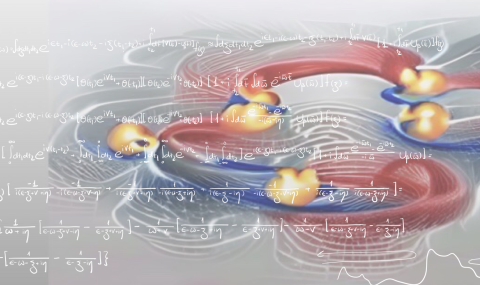Superconductivity is one of the most striking examples where even weak interactions can qualitatively change the properties of an electronic system. It has been known to occur in many metals and alloys for over a century, and the basic mechanisms have been well understood for many decades. Despite the maturity of this field, newly synthesized materials continue to throw up surprises that defy the established framework. Examples of the former include systems with very low electron density or strong spin-orbit coupling. The intertwinement of spatial translations and spin rotations can lead to a variety of different ground states, including topological superconductors. In addition, even cases where the superconducting phase conforms to expectations exhibit poorly understood behavior when driven near a quantum critical point. Our group's interest in superconducting phenomena encompasses all these areas.
Relevant Publications
- B. Sacepe, J. Seidemann, F. Gay, K. Davenport, A. Rogachev, M. Ovadia, K. Michaeli, and M. V. Feigel'man, Low-temperature anomaly in disordered superconductors near Bc2 as a vortex-glass property, Nat. Phys. 15, 48 (2019).
- K. Michaeli, L. A. Landau, E. Sela, L. Fu, Electron teleportation in multi-terminal majorana islands: statistical transmutation and fractional quantum conductance, Phys. Rev. B 96, 205403 (2017).
- A. Steinbok, and K. Michaeli, Spontaneous finite momentum pairing in superconductors without inversion symmetry", Phys. Rev. B 95, 184515 (2017).
- S.-P. Lee, K. Michaeli, J. Alicea, and A. Yacoby, Revealing topological superconductivity in extended quantum spin Hall Josephson junctions, Phys. Rev. Lett. 113, 197001 (2014).
- K. Michaeli, L. Fu, Spin-orbit locking as a protection mechanism of the odd-parity superconducting state against disorder, Phys. Rev. Lett. 109, 187003 (2012).
- K. Michaeli, K. S. Tikhonov, A. M. Finkel'stein, The Hall effect in superconducting films, Phys. Rev. B 86, 014515 (2012).
- N. P. Breznay, K. Michaeli, K. S. Tikhonov, A. M. Finkel'stein, M. Tendulkar, A. Kapitulnik, Hall conductivity dominated by fluctuations near the superconducting transition in disordered films, Phys. Rev. B 86, 014514 (2012).
- K. Michaeli, A.C. Potter, and P.A. Lee, Superconductivity and ferromagnetism in SrTiO3/LaAlO3 oxide interface structures: possibility of finite momentum pairing", Phys. Rev. Lett. 108, 117003 (2012).
- K. Michaeli, and A. M. Finkel'stein, Fluctuations of the superconducting order parameter as an origin of the Nernst effect", Europhys. Lett. 86, 27007 (2009).
- K. Michaeli, and A. M. Finkel'stein, Theory of the Nernst effect caused by fluctuations of thesuperconducting order parameter, Properties and Applications of Thermoelectric Materials, edited by V. Zlatic and A. C. Hewson (Springer, Dordrecht, 2009), p.213.
- K. Michaeli, and A. M. Finkel'stein, Suppression of tunneling of superconducting vortices caused by a remote gate: example of an extended object tunneling, Phys. Rev. B 76, 064506 (2007).
- K. Michaeli, and A. M. Finkel'stein, Tunneling of an extended object in a dissipative environment: suppression of tunneling of superconducting vortices caused by a remote gate, Physica E 40, 175 (2007).
- K. Michaeli, and A. M. Finkel'stein, Metal-insulator transition in a system of superconducting vortices caused by a metallic gate, Phys. Rev. Lett. 97, 117004 (2006).


